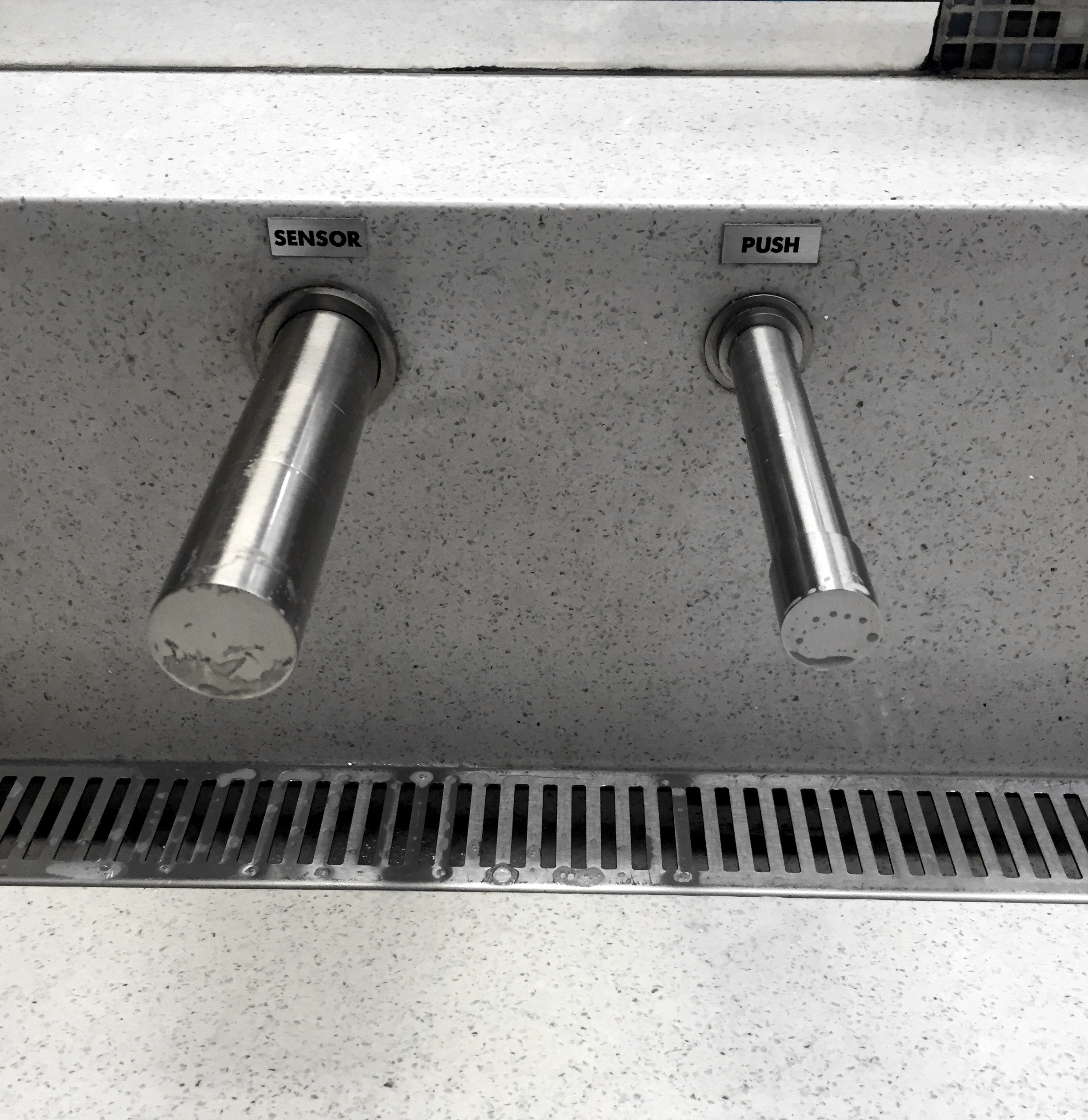Bad design decisions don’t just effect our experiences with digital products. There are plenty of poorly conceived products in the world of flesh and blood and brick and mortar waiting to derail your flow.
A sink in the men’s restroom at Los Angeles International Airport (LAX) recently reminded Kane Albarron of this. The Interaction Design Lead at Fjord in New York City got more soap than he anticipated thanks to a confusing real-life interface.
“At first glance, it appears as if you have two options for dispensing water: by sensor or by push button, as indicated on the labels,” Albarron says. “What is actually happening here is that the push dispenses soap, and the sensor dispenses water. To further complicate things, soap pumps are also available above the sink.
“I thought this was interesting, seeing as how someone actually spent time and money making little plaques that indicate the action instead of the contents. It was a real WTF moment for me when I went to rinse off my soap with more soap.”
Keep these coming. Send them to us via Twitter or Facebook using the hastag #wtfUX or email them to: [email protected] with “#wtfUX” in the subject line. Include as much context as you can, so we get a full understanding of what the f%*k went wrong.








